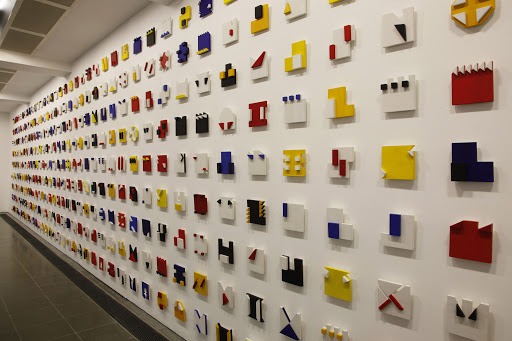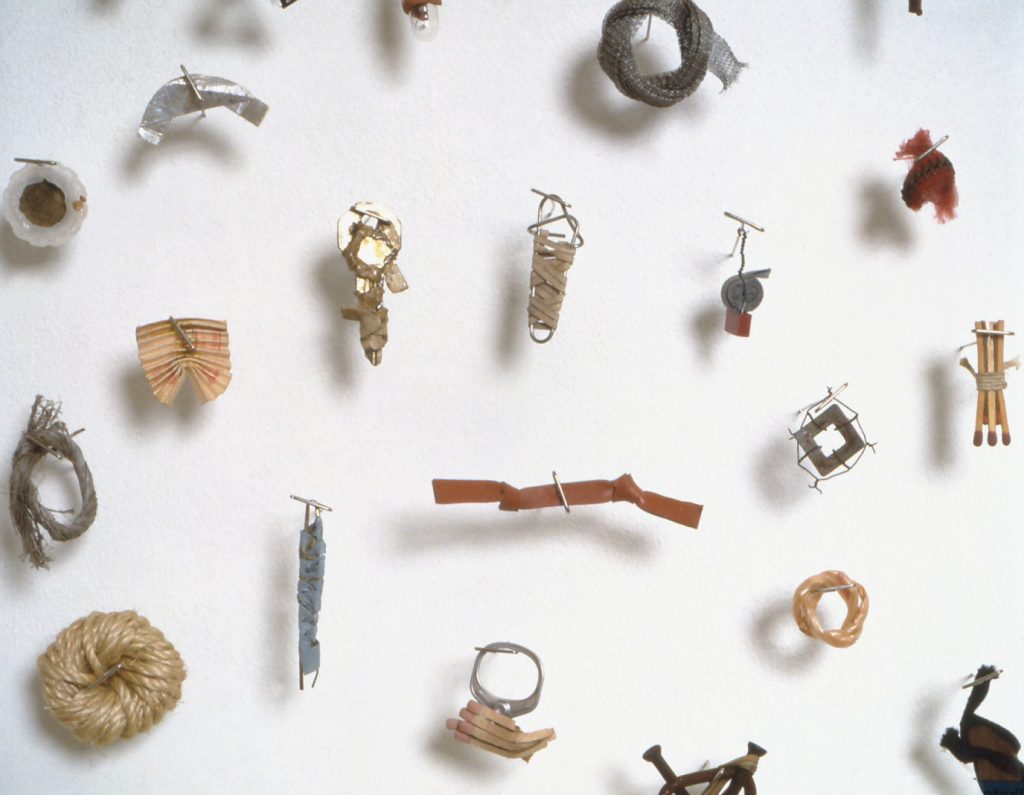Improvisatory Notations
James Jared Taylor | April 14, 2023
Improvisatory Notations
In 2012, one of my students gave me approximately two hundred 4 x 4 inch cradled wood panels. During lunch, study hall monitoring, and when urged by my Advanced Placement students to create along with them, I began to paint on the surface of these panels. I worked on them occasionally for 10 years anywhere I could- my work table at school, my studio at home, and on my dining room table. The majority of these paintings were created from the fall of 2018 until the Covid lockdown in March 2020.
They became a series of visual exercises drawing upon ideas in architecture, landscape, city plans, pattern design, geometry, and science. There was no plan. These little paintings became records of action chronicling my thoughts and observations at a particular time.
In 2014, one of my undergraduate professors, Willem Volkersz, visited my home and studio. I had some of the small painting scattered on the floor. He suggested they would look interesting as an installation. His idea stayed with me because I have always been interested in installations of multiples. There are three artists whose installations using multiples have been of great interest to me- Donald Lipski’s “Gathering Dust” at the Museum of Modern Art in New York in 1979, Melvin
Edwards’ “Lynch Fragments” at PS 1 in Queens, New York in 1980, and most importantly Lydia Pape’s “Livro do Tempo (Book of Time)” at the Reina Sofia Museum in Madrid Spain in 2011. What is common and compelling about their work it’s the fact that they were done over a certain period of time. In fact, I think Melvin Edwards is still continuing his “Lynch Fragment” pieces. The same was happening to my work in regards to my work- Improvisatory Notations.
The act of improvisation is very important to me. I have I have always enjoyed jazz and played jazz guitar for a good portion of my adult life. Like a jazz musician who is using the basic elements of music- melody, harmony, rhythm, pitch, and timbre, and dynamics, I am using the elements of art- shape, line, color, repetition, rhythm, pattern, and emphasis. These basic elements and principles are always present either in music or visual art. Like a jazz musician, I am in the moment and improvising incorporating them with what is going through my head at the time. But unlike a jazz musician, these are actions are permanently recorded in paint and pencil as if they were written down as notes (notations)- temporality as recorded action.
Livro do Tempo (Book of Time) by Lygia Pape
Lynch Fragments by Melvin Edwards
Gathering Dust by Donald Lipski


